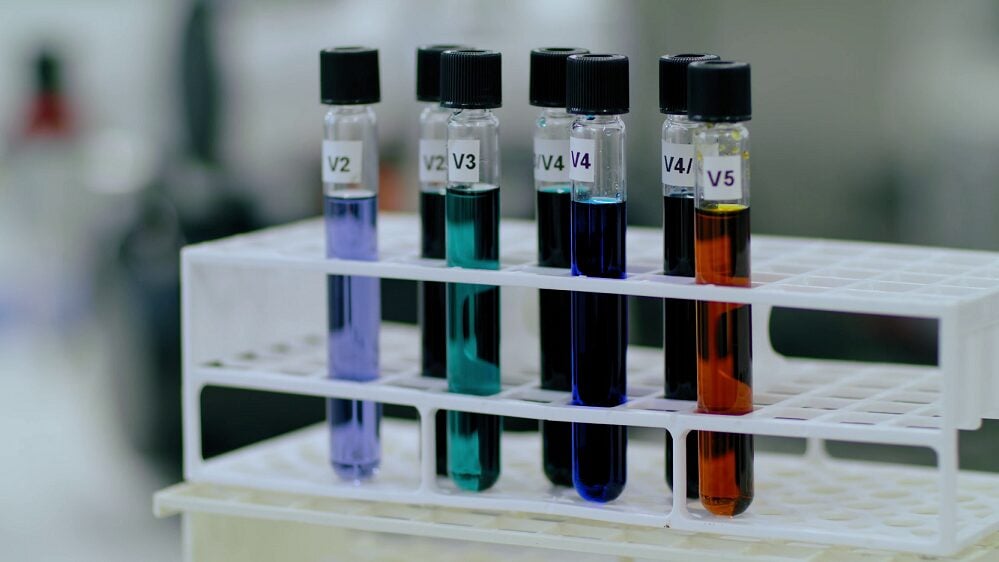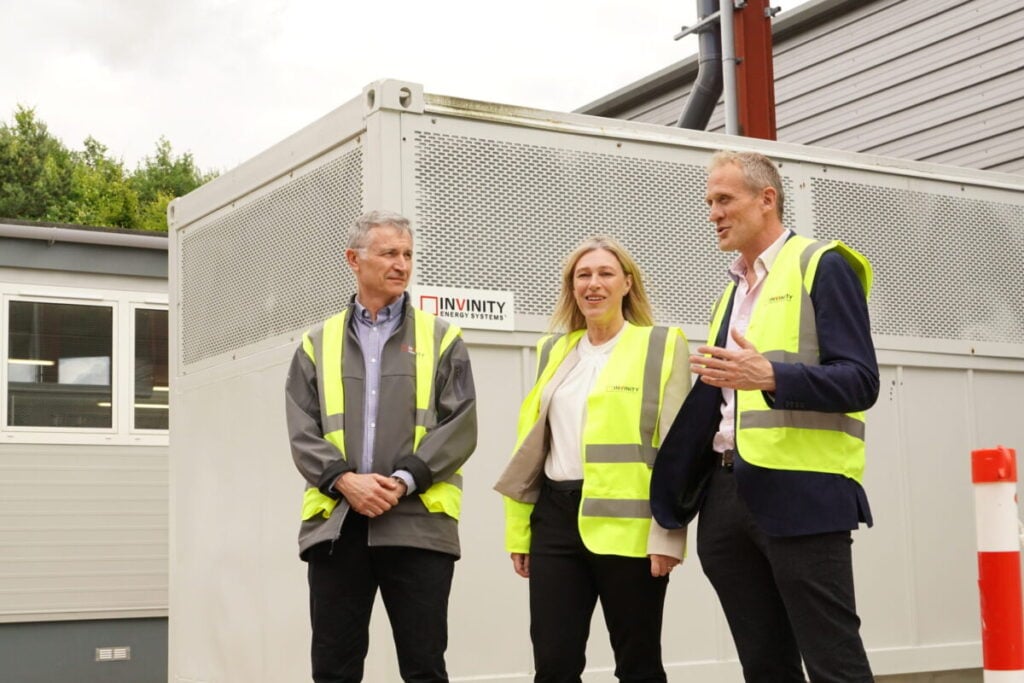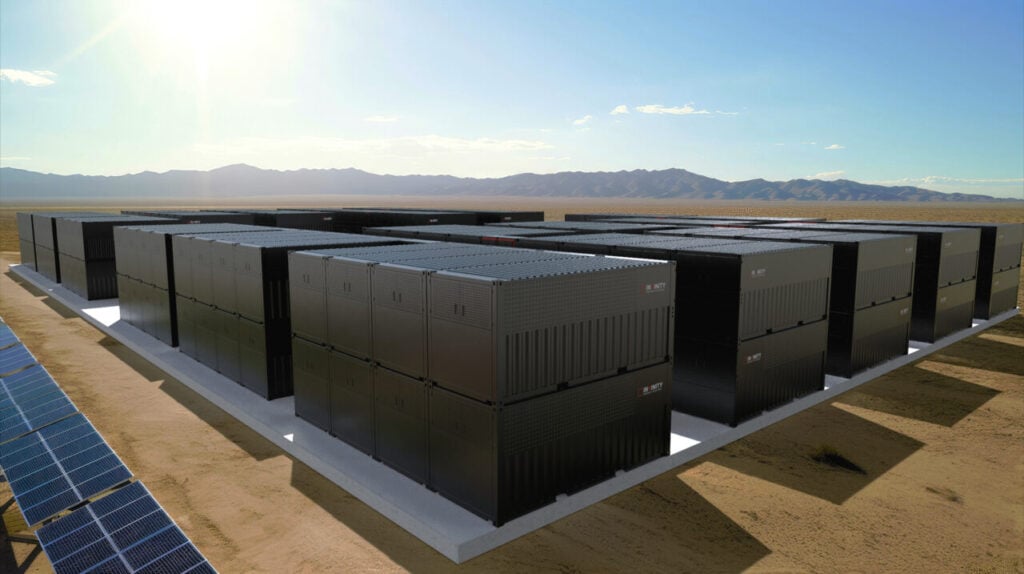


Vanadium flow batteries could be a workable alternative to lithium-ion for a growing number of grid-scale energy storage use cases, say Matt Harper and Joe Worthington from Invinity Energy Systems.
From the outside looking in, it looks as though the global energy storage market is set to be dominated by a mix of lithium-ion battery energy storage systems (BESS) and, to a lesser extent, pumped hydro, for the foreseeable future.
Enjoy 12 months of exclusive analysis
- Regular insight and analysis of the industry’s biggest developments
- In-depth interviews with the industry’s leading figures
- Annual digital subscription to the PV Tech Power journal
- Discounts on Solar Media’s portfolio of events, in-person and virtual
For everything except perhaps sodium-ion (Na-ion), which now has the backing of major Chinese manufacturers like BYD and CATL, electrochemical alternatives to Li-ion are still proving their competitiveness on both financial (bankability, levelised cost of energy) and non-financial (safety, energy density, duration) metrics.
Indeed, as we heard earlier this week, even Na-ion is still behind the curve of lithium iron phosphate (LFP) in several of those areas, including energy density and manufacturing cost.
Vanadium redox flow battery (VRFB) manufacturers like Anglo-American player Invinity Energy Systems have, for many years, argued that the scalable energy capacity of their liquid electrolyte tanks and non-degrading cell stacks make the technology a suitable complement, if not an alternative, to lithium for bulk and long-duration energy storage (LDES) applications.
As reported by Energy-Storage.news last week as Invinity launched Endurium, the latest iteration of its VRFB tech, the company now claims it has the tools to fix problems lithium may not be able to.
Invinity chief commercial officer Matt Harper and senior director of corporate affairs Joe Worthington tell ESN Premium that Endurium can not only provide many hours of storage, but its dramatically lowered footprint and safety profile make it an option for developers struggling to get a Li-ion BESS project through permitting and win over local authorities having jurisdiction (AHJs).
‘High throughput suited for evolving revenue stack capture’
Flow batteries have long been cited as a contender for LDES applications in particular. Harper and Worthington note that developments, such as the UK government’s announced Cap and Floor mechanism to support long-duration projects, or California’s various programmes for LDES – including sizeable pilot projects that Invinity is involved with – are exciting and encouraging.
In the UK, LDES could become part of the asset base that regulator Ofgem is responsible for overseeing on behalf of consumers, while California is moving “from tens of megawatt-hours to hundreds of megawatt-hours, then gigawatt-hours-worth of long-duration storage over the next three to four years,” Harper says.
Yet it isn’t just the emerging LDES opportunities, broadly and loosely defined as applications requiring 8-hour duration of discharge or more at full-rated power, that Invinity sees as an addressable market for Enduriam.
The flow battery is really a high throughput product as much as it is an LDES one. With a capability for unlimited cycling, Endurium could run “effectively 24/7 in a mixed charging-discharge mode,” Harper says, adding that it can enable asset owners to capture more of the total revenue stack available in maturing markets.
For example, in both the UK and Australia, batteries are trending away from being built for specific ancillary services and moving towards energy trading or arbitrage, as well as encompassing wider sweeps of the ancillary market.
“Around the world, the applications that batteries are being asked to serve are becoming much more complex. People are stacking individual pieces of revenue on top of one another,” Matt Harper says.
“What that means is that while we have a battery that fundamentally is very capable at longer duration applications, it’s really that we think of that as high throughput. It doesn’t matter if you’re doing a single, 8-hour discharge a day, or if you’re doing four 2-hour discharges a day. In both cases, you’re taking advantage of that very, very high cycling capability.”
‘We don’t need gigafactories’
One thing often overlooked in the understandable excitement about lithium-ion battery production being on a massive wave of growth is just how hard it is to make money from it.
BloombergNEF has found Li-ion prices have declined 20% in 2024 to US$115/kWh and, driven largely by manufacturers in China, the space is increasingly competitive. The recent move into Chapter 11 bankruptcy protection and mass layoffs at Northvolt is a big indication that even with billions of dollars investment and hundreds of headhunted technical staff, margins are thin and offtakers call the shots.
“The thing that has been challenging with lithium, is that even with gigafactory scale, the way prices are in the market right now, it’s still very difficult to be profitable,” Matt Harper says.
On the other hand, Invinity’s Endurium flow battery “doesn’t require gigafactory-scale manufacturing to be able to be produced effectively and efficiently,” he claims.
“We don’t need clean rooms. We don’t need hugely sophisticated robotics. It’s really a very small series of comparatively simple manufacturing steps that pull this product together and allow us to fill our electrolyte and get the product up and running.”
Invinity currently has around 500MWh annual production capacity for its flow batteries out of two facilities in Scotland, UK, and a further 200MWh in North America at a site in Vancouver, Canada.
The company is also considering the addition of manufacturing lines at or near its US offices and research centre in California if it were to confer advantages in meeting domestic content requirements for federal incentives.
Improved footprint alongside reduced fire risk and noise
As mentioned in some detail in our news coverage from 3 December’s launch of Endurium, Invinity claims the flow battery occupies a significantly smaller footprint than other flow batteries.
While the energy density of lithium BESS containers is still higher than Endurium’s, Joe Worthington says the absence of fire risk means VRFB units can be packed more tightly onto a site and even stacked vertically without too much complication—as seen at the Oxford Energy Superhub project in the UK, which used a previous iteration of Invinity flow batteries.
Its safety profile and less noisy operation than a lithium-ion BESS also mean Endurium could help developers win over local AHJs and communities.
“If we’re talking specifically about energy density, it depends on the layout of a specific site, but broadly speaking, we’re going to be equal to or better than what lithium is able to do,” Harper says, adding that vanadium flow batteries can also be placed in closer proximity to other industrial equipment at sites without falling foul of planning regulations and codes.
“Having this product out there gives developers an option,” says senior director of corporate affairs Joe Worthington.
“If they’re really struggling with planning on a site, there’s now a viable alternative option, where if they’re failing the planning [process] on noise and fire risk, you can put a flow battery in and demonstrably say it’s less noisy and it cannot set on fire.”
China’s vanadium push is an ‘opportunity, not a threat’
Back in 2021, we took a deep dive into the strategies of three primary vanadium producers looking to enter the flow battery space in our quarterly journal PV Tech Power (Vol.28).
In that interview, Erik Sardain, then a principal consultant at natural resources market tracking firm Roskill, said that the future success of vanadium flow batteries could hinge on how readily the technology was embraced by China.
Most of the world’s vanadium is not mined but is a by-product of steel production, and China dominates that space too. Meanwhile, the Chinese government around seven years ago established a programme of deploying flagship large-scale VRFB projects.
One of those has just gone online recently, a 157MW/700MWh grid-forming system in Ushi, Dalian province through technology provider Rongke Power. It is the largest flow battery in the world to date.
However, rather than seeing a potential for Chinese players to flood the global market with VRFBs as a competitive threat, Matt Harper believes the opposite is true.
The CCO says there is “more opportunity than threat” as it stands today. Harper used to work for VRB Energy, a Chinese vanadium flow battery player based in Beijing.
“One of the reasons that I and my other colleagues left and formed our own company was because the way that those products were being built wasn’t suitable for Western markets,” Harper says.
“If you look at all the flow batteries that are being built in China, they’re all built onsite, highly bespoke, constructed in-situ projects. They look like a small chemical plant with huge tanks and pumps and pipes all over the place, which is a great way to build those plants if you can have a hundred or 200 or so workers walking around putting that thing together over the course of about a year. You absolutely cannot do that in higher-cost environments, and you absolutely cannot do that where you’ve got the kind of permitting and construction safety regimes that we have in North America and Europe,” he says.
“If you’re going to be able to build a project at a reasonable cost on a reasonable time frame, you need a product like ours, where it comes out of the factory, totally turnkey, 100% ready to be installed and operated.”
Whereas the Chinese downstream flow battery industry simply has not trended towards modular products of the type overseas companies like Invinity – and others – are commercialising, Harper says the opportunity is in the upstream.
“Despite how the product is being embodied, a lot of the materials that go into it are the same [in China as elsewhere]. We’re talking with vanadium electrolyte producers in China, who have phenomenal pricing for that material, because it doesn’t matter if the vanadium is going into one of our turnkey products or if it’s going into sort of a bespoke, built-in-place solution, the liquid is the same, and we can take advantage of that.”

